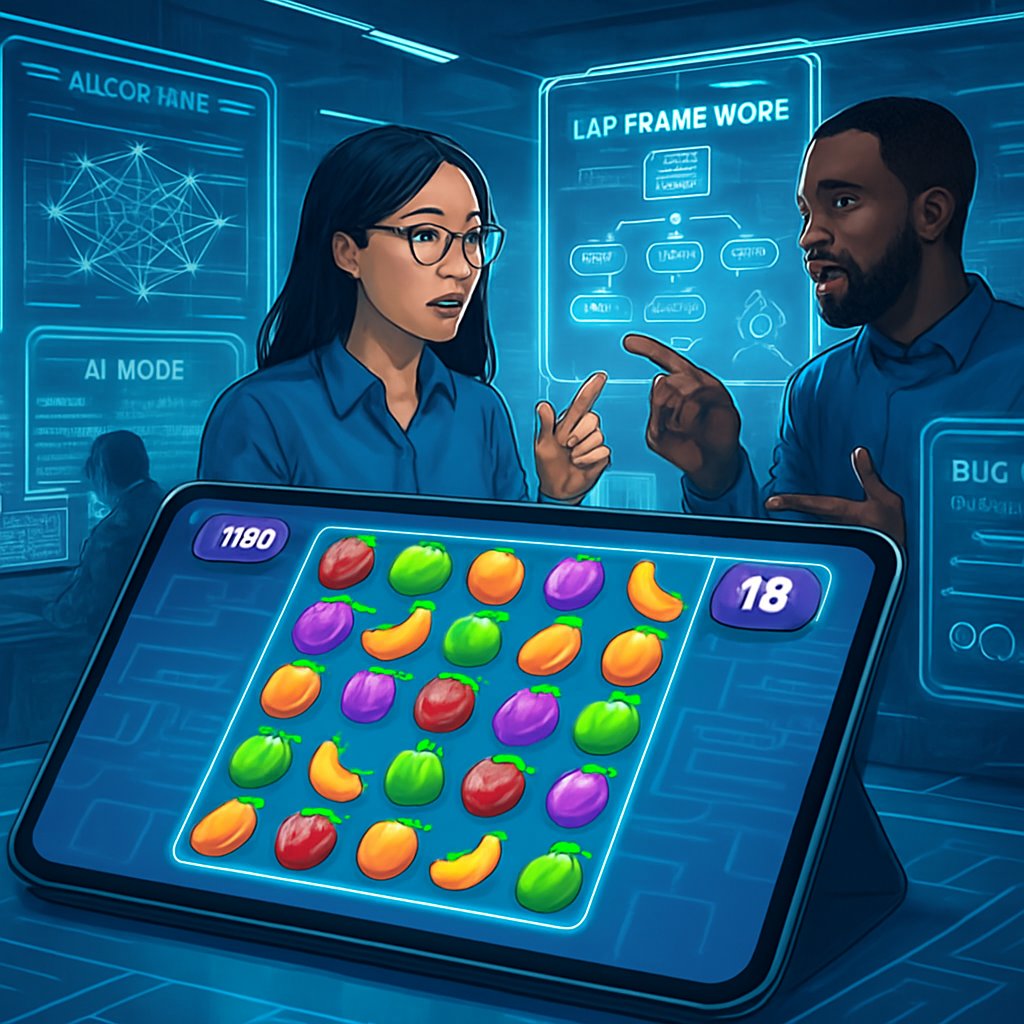Unlocking the Code: How AI is Revolutionizing Playtesting in Mobile Games
Video games have come a long way since the days of pixelated 8-bit graphics and simple mechanics. They not only engage millions of players but also require massive teams dedicated to ensuring a smooth and bug-free experience. Enter playtesting—the crucial phase in video game development aimed at ironing out kinks and ensuring players get the best experience possible. It’s time-consuming, often tedious, and traditional methods rely heavily on human input. What if I told you that AI, particularly Large Language Models (LLMs) like GPT-4, could automate parts of this process? Let’s take a closer look at a recent study that explores this very possibility.
What’s the Deal with Playtesting?
At its core, playtesting involves real people getting their hands on a game before it hits the shelves. They play, explore, and break the game to identify bugs and assess gameplay mechanics. However, this can be pretty labor-intensive and expensive. Gathering a group of players, ensuring they have the right skills, and analyzing feedback is no small feat.
Traditionally, playtesting methods often fall short—after all, unlike conventional software, games require something more: dynamic reasoning and spatial awareness. Think about it—players don’t just follow linear paths; they switch tactics, make snap decisions, and sometimes even break the game logic we developers worked hard to create.
The Power of AI: Enter Large Language Models
In the past few years, artificial intelligence has exploded in popularity, reshaping industries from healthcare to entertainment. LLMs, like OpenAI's GPT series, display prowess in language processing and even image reasoning. But how can they help with playtesting?
The study we're diving into focuses on using LLMs for an automated playtesting framework specifically tailored for a popular genre—match-3 games, with Candy Crush Saga being the classic example. These games demand players to swap pieces on a grid to create matches, which results in dynamic gameplay scenarios. It's challenging to automate this because LLMs struggle with understanding visuals, making it tricky to analyze game states effectively.
The Challenges in Using AI for Playtesting
Despite their potential, several hurdles impede the full integration of LLMs into the playtesting sphere:
Visual Perception: Current LLMs lack the ability to perceive game environments visually, which is key in understanding highly interactive gameplay.
Limited Research Base: Most existing studies have focused on text-based games or those with established APIs. Many popular mobile games like Candy Crush lack these APIs, complicating direct application of LLMs.
Adaptive Learning: Games often require quick thinking and adaptability—qualities that conventional testing methods sometimes neglect.
Meet LAP: The New Kid on the Block
With these challenges in mind, the researchers have introduced LAP—an innovative framework that employs LLMs to automate playtesting for mobile match-3 games. Here’s how it works in three easy phases:
1. Automated Preprocessing
The first phase involves converting visual game states into structured inputs that LLMs can understand. Think of it as translating a game’s graphics into a language that the AI can comprehend.
2. Automatic Prompting Mechanism
Next, LAP uses an automatic prompting mechanism that provides LLMs with game rules, strategic examples, and contextual information, essentially guiding the AI in generating valid gameplay actions. It’s like training a new player by showing them the ropes before they dive in.
3. Solution Execution
Lastly, LAP translates the AI-generated outputs into executable actions within the game. The LLM analyzes the game state, generates moves, and those moves are carried out in the gameplay to test their efficacy.
Testing LAP: The Results Speak Volumes
To evaluate LAP’s capability, the researchers conducted experiments using an open-source match-3 game called CasseBonbons. Here’s what they found:
Higher Code Coverage: LAP achieved a remarkable 79% code coverage, meaning it navigated a majority of the game’s codebase, revealing potential bugs.
Improved Game Progression: LAP was able to score a jaw-dropping 27,520 points and complete multiple game levels, far outperforming conventional testing tools.
Vulnerability Discovery: The AI even uncovered crashes and bugs that manual testing missed, showcasing its potential for uncovering hidden vulnerabilities.
Implications Beyond Gaming
The implications of LAP extend beyond just mobile gaming. Imagine using such frameworks in various game genres! Not only can this enhance game quality, but it could also drastically reduce development costs and time spent on playtesting.
Key Takeaways
Automation is Here: AI, especially LLMs, is starting to play a significant role in automating tasks that previously demanded extensive human input, such as playtesting in video games.
LAP Framework: The newly introduced LAP framework has proven effective in testing match-3 games, demonstrating capabilities that outperform traditional testing methods.
Potential for Broader Application: While this research focused on match-3 games, the principles can be applied to other game genres, paving the way for a new era of efficient game testing.
Future Research: Further exploration is needed to tackle visual comprehension limitations and expand LLM applications across different game types.
As technology continues to evolve, the marriage of AI and gaming promises to revolutionize how games are developed and tested. The future holds exciting potential, making it an exhilarating time to be part of this industry.
This groundbreaking study serves as a reminder of the incredible possibilities that lie at the intersection of AI and gaming. For game developers, leveraging AI like LAP could not only improve gameplay quality but also transform the very essence of how games are tested and experienced by players worldwide.

